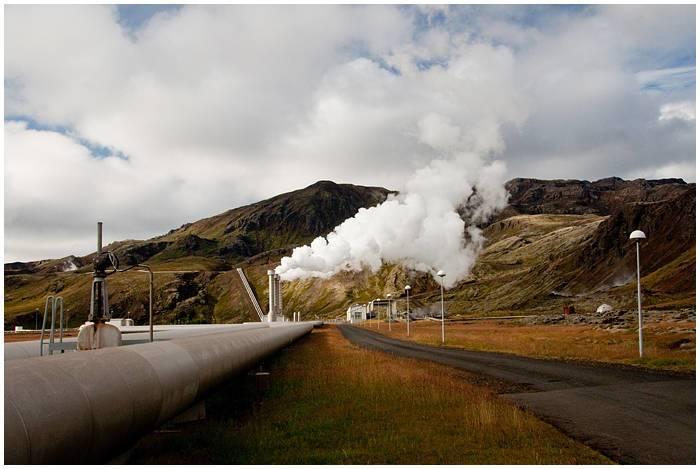Submitted by Guest Contributor
By Kevin Carter, Director, Diversity & Inclusion, Campbell Soup
Similar to every initiative at Campbell Soup, we reexamined our Diversity and Inclusion (D&I) efforts in 2012. It meant asking ourselves several hard questions but most importantly, "what we believe, what we will do and how we will measure our success?"
I serve as the Director of Diversity & Inclusion. I collaborate with business units on diversity strategy; manage our Business Resource Affinity Networks, or BRANs, and conduct facilitated leading and learning on such topics as Intercultural competence and work style orientation. I have also been acquainting myself with social media through Inclusion Innovates to share Campbell D&I efforts externally to build affinity in the marketplace.
This retrospection was important for Campbell, D&I and all our employees because we seemed stuck in a different era; not yet successful connecting with an increasingly large multicultural marketplace. It had become simply crucial that we acted more like the “iconic” brand we aspire to be and build a robust affinity with new demographic groups.
Hispanic Network de Campbell and Pepperidge Farm (HNdeC), one of the company's eights BRANs, has initiated several efforts towards this purpose, many in partnership with the Campbell Consumer Insights Department, to aid the company in gaining a deeper understanding of the Hispanic consumer, including attitudinal and food-specific perspectives.
What We Believe: Diversity and Inclusion
In addressing these questions, it became clear that the company needed to progress from diversity to inclusion to impact. By accepting this as our journey, we would be consciously declaring that D&I is a continuous improvement process that must result in clear business outcomes that lead to organizational success.
Typically, diversity efforts are measured by an organization's ability to attract, select and retain a mix of people in the workplace relevant to effective operations. Similarly, inclusion efforts are usually measured by whether or not this diverse mix of talent is acknowledged, valued and engaged in pursuit of business goals. We are now clarifying one additional, and vital, component: D&I progress is ultimately measured by an organization's ability to leverage a diverse mixture of talent for business impact in sales, productivity and performance.
What We Will Do: Impact
We will focus on talent management, work climate and networks to delivery business impact.
In talent management, our efforts to attract, recruit and retain diverse talent include such activities as recruiting professionals at conferences organized by the National Black MBA Association (NBMBAA), National Society of Hispanics MBAs (NSHMBA) and National Society of Black Engineers (NSBE). We also partner with our BRANs to attract and develop talent at the company.
For example, Campbell Maxton American Indian Network (MAIN) partners with Robeson Community College to assist high school and associate degree students obtain the skills, competencies and opportunities to work at Campbell’s. Specifically, 28 employees have gained additional skills through RCC’s Advanced Manufacturing and maintenance apprenticeship programs which have allowed them to move into our Maintenance department to replace employees who have retired over the past three years.
 When we shift to work climate, the journey switches from active recruitment to consistent education and empowerment.
When we shift to work climate, the journey switches from active recruitment to consistent education and empowerment.
One of our classes on Inclusive Leadership, for example, provides leaders with the awareness, knowledge and skill readiness to enable individuals and groups to contribute their fullest potential. Valuing Diversity, Practicing Inclusion explores the various diversity challenges that are affecting the business and links them to the organization’s existing diversity initiatives.
We are asking our managers to reflect on some fundamental questions such as: how do my strengths prevent others from exhibiting theirs and what don’t I know about others that could aid our collective success?
Educating Managers about Idea Networks
In learning sessions, these types of questions are “eye openers” because managers reflect on how they may not be valuing the diversity, or the uniqueness, that a direct report brings to a collective task. In a recent session, for instance, many participants were surprised about the homogeneity of their “idea networks.” The concept of “idea networks” is important for our diverse employee base because diverse people generate diverse ideas that lead to innovation.
While classroom education serves a specific purpose, we complement these with networking, relationship-building and experiential learning through our eight BRANs.
BRANs are employee led, company supported, volunteer organizations that assist the company with successfully on-boarding, engaging and developing members representing demographic difference within the organization. These Networks have hosted or sponsored sessions such as the Asian Network of Campbell's (ANC) China 101 workshop and the Bridge Network's Generations program and the Women of Campbell and Pepperidge Farm (WoC) Leadership series.
Our BRANs have also reached outwards to connect with business partners. Campbell’s Administrative Professionals (CAPs) hosted the executive assistants of the World 50 organization to foster relationships to accelerate administrative assistant on the job performance, skills and competencies.
Employee Groups: Building Competence, Generating Affinity
BRANs generate three organizational benefits: connection, competence, and business development.
Specifically, BRANs provide members with opportunities to connect with others to share experiences, best practices and form essential support systems. Similar to other organizations; however, it is a constant challenge to prove the value of BRANs to middle-managers. While leaders typically understand that an organization has to cultivate employee engagement and input, we’ve learned that managers don’t always support employee participation, particularly if they are on tight deadline.

To address this reality, we are continually projecting the value BRANs bring to our organization internally as well as externally. It is proven that successfully initiated employee networks generate insights and often business development opportunities. For example, our African American Network (CAAN) hosted presentations on "Multicultural Marketing to African Americans," that led to a spirited discussion on how to increase sales for a specific product segment. ANC then sponsored an internal cooking competition using Campbell’s Chefs and ingredients where recipes were shared at the 33rd Annual Asian American and Pacific Islander Heritage Festival.
Shifting into High Gear: Testing the Power of Social Media
As I mentioned early, however, diversity and inclusion are an evolutionary journey. So over the next 12 to 36 months, we are going to kick things up a notch by doing some things that are familiar, some others that are evolutionary, as well as some that are revolutionary.
The familiar:
- Funding D&I efforts, such as education and external partnerships,
- Supporting BRAN activities, and
- Developing and retaining diverse talent.
The evolutionary: accelerated embedding of D&I through higher levels of manager commitment and BRANs cross-collaboration to create business results.
The revolutionary: an accelerated use of technology, social media and innovative ideas, matched with a culture of open-mindedness, Intercultural expertise and collaboration to reach our objectives.
For example, the Campbell and Pepperidge Farm chapters of Our Pride Employee Network (OPEN) hosted a booth at the Equality Forum "Out" festival. OPEN handed out a mix of V8 Fusion, Sparkling Fusion, V8 Energy, PF Goldfish, Cookies and Crackers and Swanson Flavor Boost varieties with Recipe cards. Additionally, the Network conducted a survey to acquire demographic data about the LGBT community and its allies regarding attitudes towards Campbell and its products.
Our goal in the social media arena is to “step and breathe” – first make connections, gain insights and then collaborate with company departments on projects that generate business. The possibilities are exciting!
How We Will Measure Success
 As most leaders know, D&I management consists of formal and informal processes, policies and practices built in to effectively manage commonalities and differences among all organizational stakeholders in a manner that delivers value to the organization. It's a mouthful but it's meant to be expansive and a testament to the rich diversity of our organizational talent.
As most leaders know, D&I management consists of formal and informal processes, policies and practices built in to effectively manage commonalities and differences among all organizational stakeholders in a manner that delivers value to the organization. It's a mouthful but it's meant to be expansive and a testament to the rich diversity of our organizational talent.
Evolving from diversity and inclusion to impact, the final all-important rung requires an accelerated effort in benchmarking, educating and networking.
Benchmarking: Diversity and inclusion must be managed against clear benchmarks addressing some of our most important organizational challenges like innovation and human capital, two key challenges for all corporations today. D&I connects the two! A diverse team means many more ideas, different perspectives and a continual cycle of innovation. We want to go beyond compliance. This means leveraging information from Equal Employment and Affirmative Action Programs and Employee Life-Cycle analysis with anecdotal and quantitative date to determine the how, what and why of decisions.
We not only position ourselves to limit liability, cost, turnover and missed opportunities; we also facilitate an inclusive, innovative culture that becomes the standard by which others are measured.
Educating: We want to establish Intercultural expertise as a core competency for leaders so that all employees have the opportunity to achieve their full potential on the job. Challenged to bring D&I education to our plants and to remote employees, we will launch a Diversity E-Learning Course. This training will provide learning insights around inclusive behaviors that promote individual and team productivity. As part of Managing the Campbell Way, our goal is to provide behavioral reflections to managers regarding work climates that improve manager quality.
Connecting: We want to create networks within and outside our company to generate insights, to build affinity and to foster innovation among our team members. Currently, BRANs operate relatively independently. Cross-network interaction and cooperation have not been maximized. Our goal is to increasingly leverage the insights of BRAN members internally to spur innovation and to share their value with an increasingly diverse external marketplace.
Which brings me to measurement: How will we measure the success of the journey from diversity to inclusion to impact?
By measuring the level of diversity (the mix, representation, and varied skills and perspectives of people), the breadth and depth of inclusion (people being respected, engaged, and challenged), and improved business results that we generate for our organization.
That is the Campbell way. That is creating shared value.
***************
Previously:
Nourishing our Planet: 50 Interviews, 5 [Sustainability] Priorities
Nourishing our Consumers: Measuring Success Against a Constantly Moving Target
Nourishing Our Neighbors: Audacious CSR Goals Demand Revolutionary Ideas
About Kevin Carter:
Kevin A. Carter is the Director, Diversity and Inclusion (D&I) for the Campbell Soup Co., founder of Inclusion Innovates and a blogger for Inclusion to Innovation and Building the Expo. With Campbell‘s, his current focus is D&I strategy development; managing the company’s Business Resource Affinity Networks; designing and facilitating D&I leading and learning sessions for organizational units on IDI (intercultural developmental inventory) and LIFO (Life Orientations); D&I HR integration and D&I reputation management. With Inclusion Innovates, his “disruptive inclusion” theory and “inclusion innovation” process reflects his belief that the integration of diversity, Intercultural competence and social media technologies leads to breakthrough innovation and business value.
Kevin is also the co-chair of the Conference Board Diversity Leadership Council and the chair of the Diversity Metrics Workgroup of the Society of Human Resources Management (SHRM) Diversity Standards Taskforce. These committees are developing standards and the "new normal" in the diversity and inclusion field.





 For impact investing to achieve credibility as an asset class, investors need a reliable way to compare investment opportunities and measure the performance of a fund’s portfolio over time. To meet this need, GIIRS has built a rigorous assessment process for both companies and funds. Data is self-reported by companies and reviewed by a third-party verification service provider,
For impact investing to achieve credibility as an asset class, investors need a reliable way to compare investment opportunities and measure the performance of a fund’s portfolio over time. To meet this need, GIIRS has built a rigorous assessment process for both companies and funds. Data is self-reported by companies and reviewed by a third-party verification service provider,  With the availability of GIIRS for entering data and receiving ratings, the IRIS taxonomy for using a standard language on impact performance and publishing impact data reports, and PULSE for collecting, tracking and reporting impact data, some companies and funds may wonder if these tools represent competing solutions for the industry.
With the availability of GIIRS for entering data and receiving ratings, the IRIS taxonomy for using a standard language on impact performance and publishing impact data reports, and PULSE for collecting, tracking and reporting impact data, some companies and funds may wonder if these tools represent competing solutions for the industry. 
















 When we shift to work climate, the journey switches from active recruitment to consistent education and empowerment.
When we shift to work climate, the journey switches from active recruitment to consistent education and empowerment.
 As most leaders know, D&I management consists of formal and informal processes, policies and practices built in to effectively manage commonalities and differences among all organizational stakeholders in a manner that delivers value to the organization. It's a mouthful but it's meant to be expansive and a testament to the rich diversity of our organizational talent.
As most leaders know, D&I management consists of formal and informal processes, policies and practices built in to effectively manage commonalities and differences among all organizational stakeholders in a manner that delivers value to the organization. It's a mouthful but it's meant to be expansive and a testament to the rich diversity of our organizational talent.